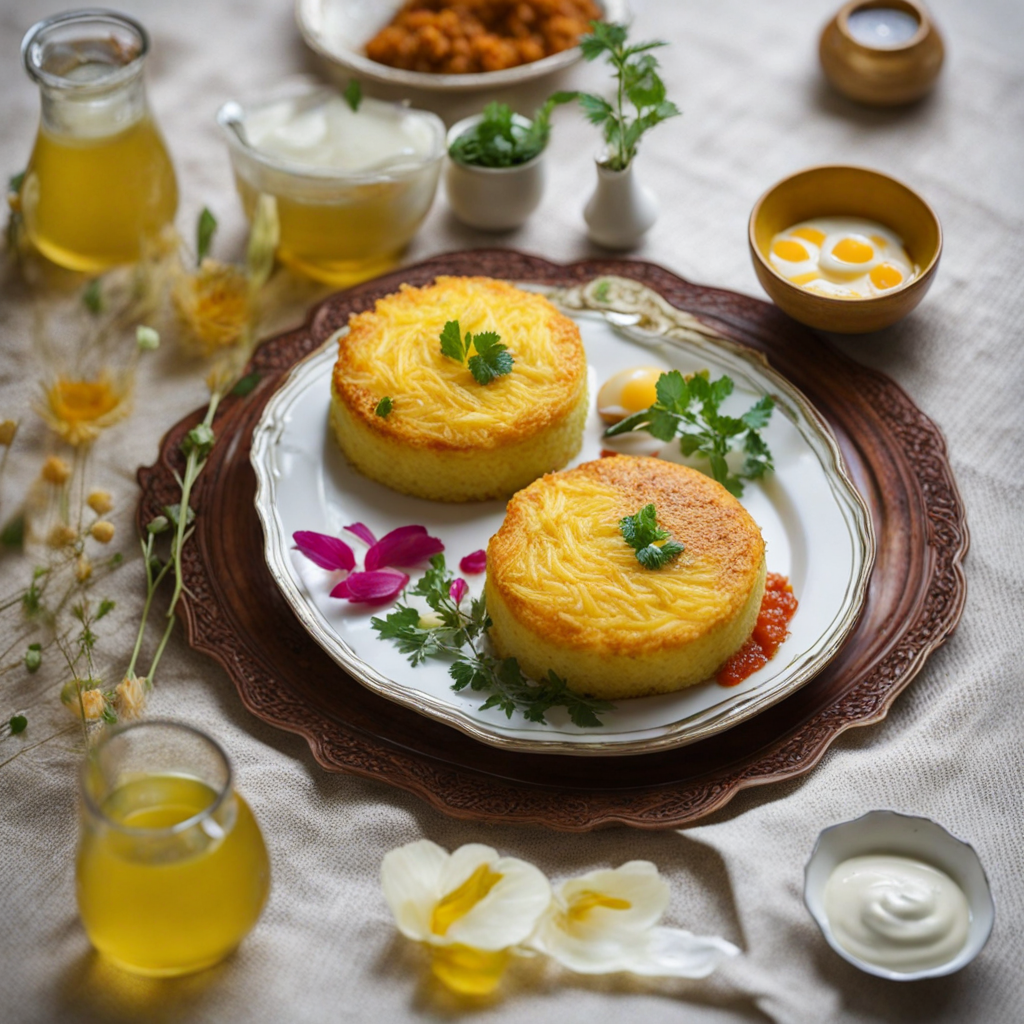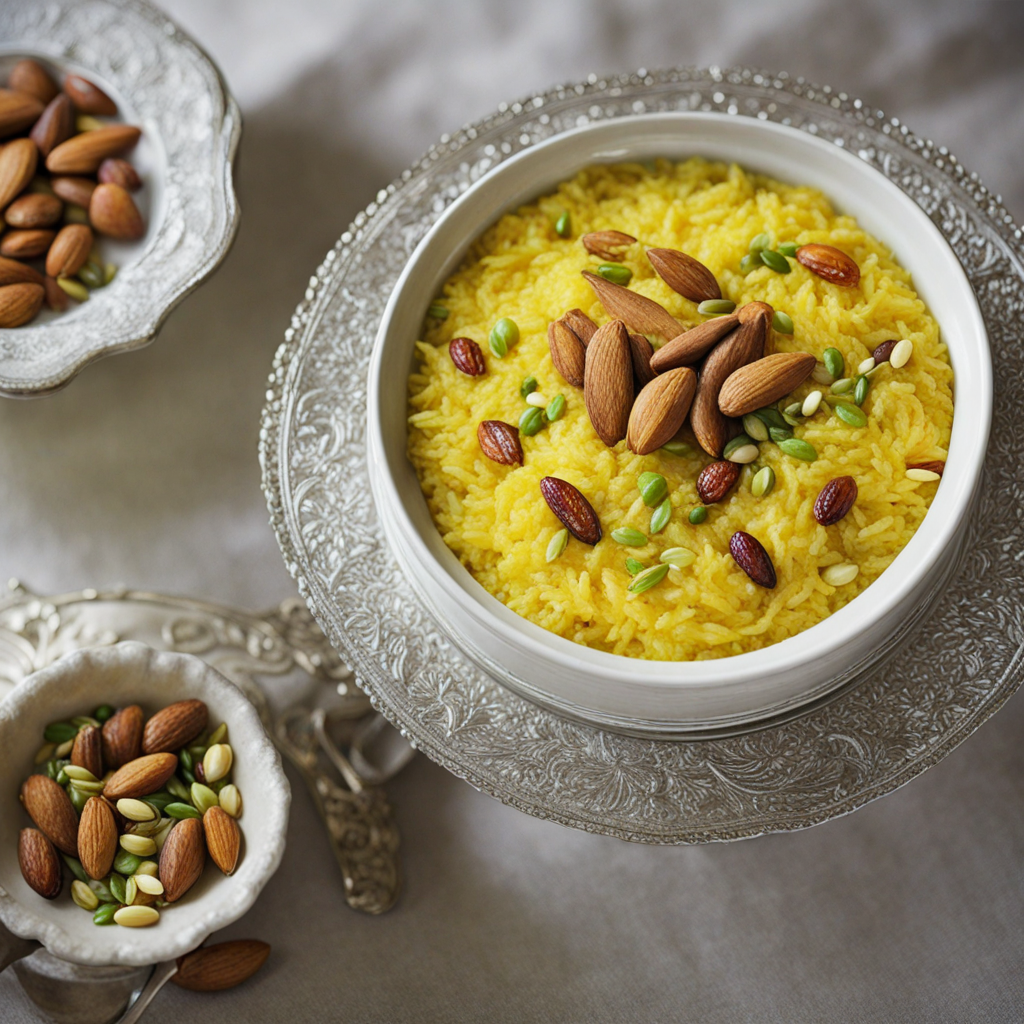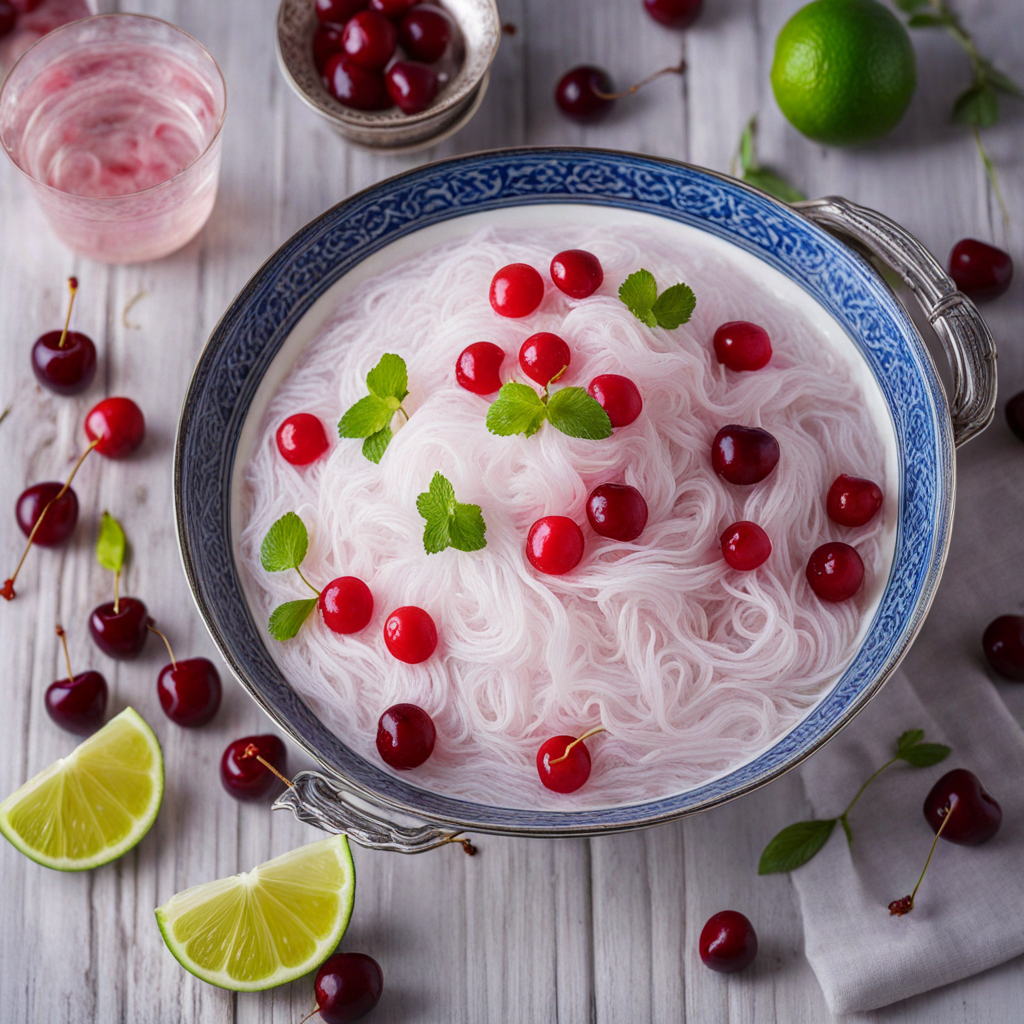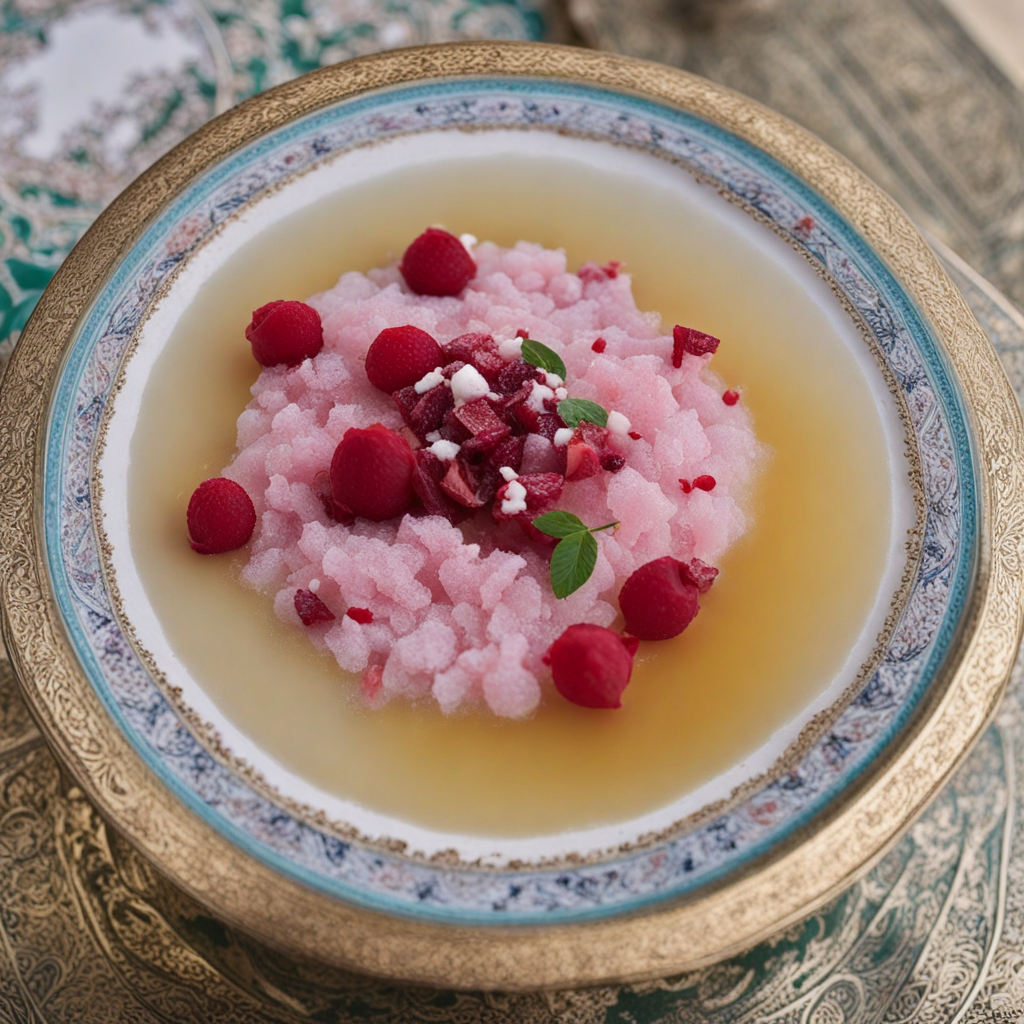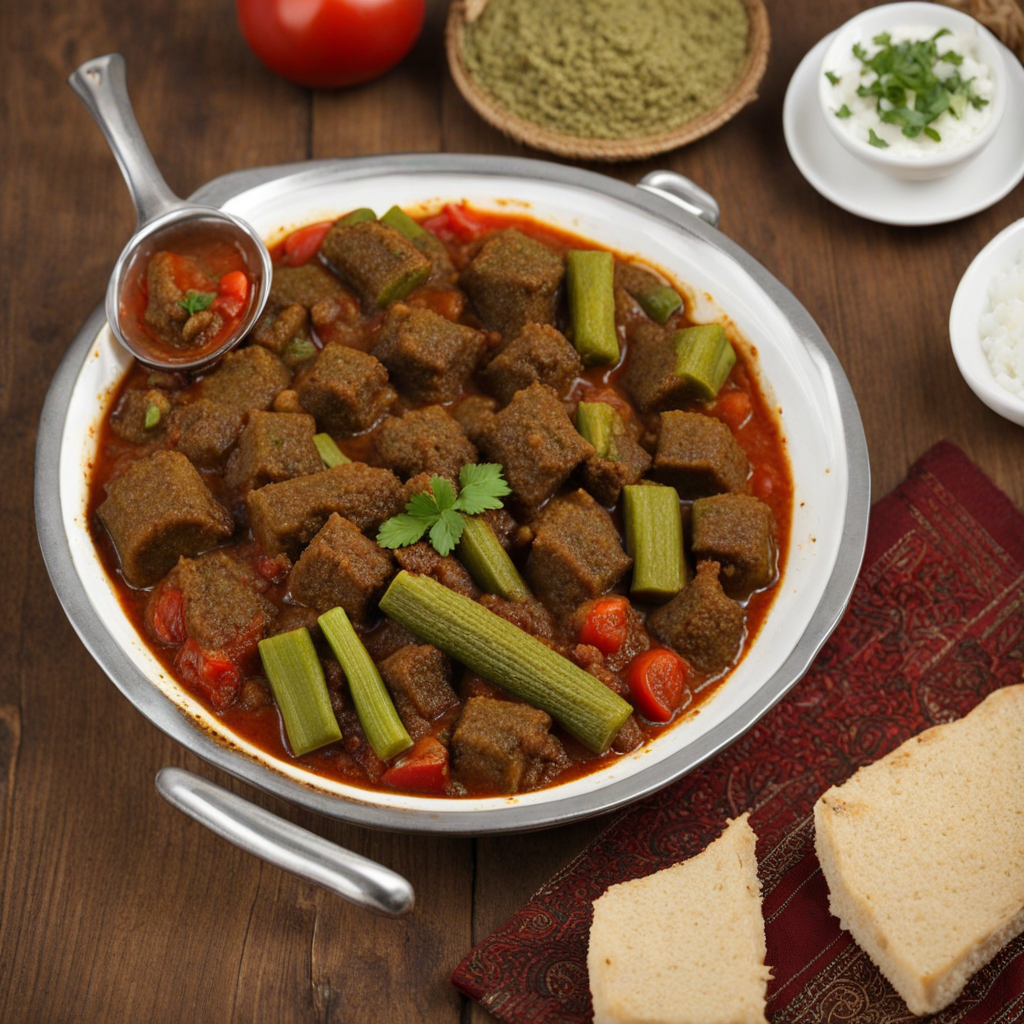Tahchin
Tahchin is a sumptuous Iranian dish that perfectly marries the flavors of saffron-infused rice with tender, marinated meat, often chicken or lamb. The rice is cooked to a fluffy perfection, and the addition of saffron not only lends a vibrant golden hue but also imparts a delicate floral aroma that is simply irresistible. The dish is typically layered, with the aromatic rice forming the base and a savory filling of marinated meat seasoned with spices and, at times, a hint of yogurt, ensuring each bite is a delightful explosion of taste. The crispy, golden crust that forms at the bottom is a hallmark of Tahchin, providing a satisfying contrast to the tender rice and meat above. One of the remarkable aspects of Tahchin is its versatility. While the traditional version features chicken or lamb, it can be adapted to include various proteins or even vegetables for a vegetarian twist. The layers of flavors are further enhanced with the inclusion of barberries, which add a tartness that beautifully balances the rich saffron and savory elements. This dish is often served on special occasions and is a true representation of Iranian hospitality, bringing friends and family together around the table for a shared culinary experience. When enjoying Tahchin, the experience is as much about the presentation as it is about the taste. It is typically formed into a cake-like shape, making it visually appealing and perfect for serving at gatherings. As you slice into the golden crust, the fragrant layers reveal themselves, inviting you to indulge in the comforting, homey flavors of Iranian cuisine. Whether enjoyed on its own or accompanied by a side of yogurt or salad, Tahchin is a dish that not only tantalizes the taste buds but also warms the heart, embodying the rich culinary heritage of Iran.
How It Became This Dish
Origin of Tahchin Tahchin, a beloved dish in Iranian cuisine, has its roots deeply embedded in the culinary traditions of Persia. Its name derives from the Persian words "tah," meaning "bottom," and "chin," meaning "to arrange" or "to place." This delightful dish is a baked rice casserole, primarily made with saffron-infused rice, yogurt, and a variety of meats, often chicken or lamb. The origins of tahchin can be traced back to the royal kitchens of the Persian Empire, where elaborate dishes were crafted to impress guests and showcase the wealth of the empire. The rich flavors and intricate preparation reflect the sophistication of Persian gastronomy. Tahchin is believed to have emerged during the Safavid dynasty (1501-1736), a period marked by the flourishing of arts, culture, and cuisine in Iran. The use of saffron, a precious spice derived from the Crocus sativus flower, was widely popular among Persian cooks and is a defining flavor in tahchin. The dish embodies the Persian love for rice, which has been a staple food in the region for thousands of years. The careful layering and cooking process of tahchin not only elevates the flavors but also showcases the artistry involved in Persian cooking. \n\n Cultural Significance In Iranian culture, food plays a vital role in social gatherings and celebrations. Tahchin is often served during special occasions such as weddings, family reunions, and festive gatherings, where it is presented as a centerpiece dish. The preparation of tahchin is often a communal activity, bringing together family members who share the responsibility of making the dish. This not only strengthens familial bonds but also preserves the culinary heritage passed down through generations. The dish is not just about flavor but also about aesthetics. The golden, crispy crust of tahchin, known as "tahdig," is highly prized and often fought over at the dinner table. The texture contrast between the soft interior and the crunchy bottom layer makes tahchin an enjoyable culinary experience. This emphasis on presentation and taste reflects the Persian philosophy of balancing beauty and flavor in food. \n\n Development Over Time As Iranian cuisine evolved, so did tahchin. While the traditional version remains popular, regional variations have emerged, adapting to local tastes and available ingredients. For instance, some versions incorporate vegetables such as eggplant or spinach, while others may use different meats or even seafood. Additionally, modern interpretations have introduced innovative twists, such as vegetarian or vegan options, catering to contemporary dietary preferences. In recent years, tahchin has gained international recognition, transcending borders and introducing the world to the flavors of Iranian cuisine. Iranian restaurants across the globe have embraced this dish, often featuring it prominently on their menus. Food bloggers and culinary enthusiasts have also played a significant role in popularizing tahchin, sharing recipes and cooking techniques online. This global interest has led to a revival of traditional Persian dishes, encouraging younger generations to explore their culinary heritage. \n\n Preparation and Ingredients The preparation of tahchin is a labor of love that requires attention to detail. The base of the dish consists of basmati rice, which is soaked and partially cooked before being combined with yogurt, saffron, and eggs to create a creamy mixture. The choice of meat is typically marinated in spices and can be cooked separately before being layered into the rice. The layering process is crucial, as it ensures even cooking and distribution of flavors. The assembled dish is then baked until the rice forms a golden crust, which is the hallmark of a well-made tahchin. The final presentation often involves inverting the dish onto a serving platter, revealing the beautiful golden crust that is both a feast for the eyes and the palate. Accompanying sides, such as pickles or salad, enhance the meal, highlighting the Persian tradition of balancing flavors and textures. \n\n Modern Variations and Global Influence Today, tahchin is not just confined to traditional recipes; it has inspired a myriad of variations across the globe. Chefs experimenting with international flavors have introduced ingredients such as cheese, spices from other cultures, or even fusion elements like bechamel sauce. This adaptability speaks to the versatility of the dish and its ability to resonate with diverse palates. Furthermore, tahchin has become a symbol of Persian identity among the Iranian diaspora. It serves as a reminder of home and heritage, allowing expatriates to connect with their culture through food. Social media platforms have enabled the sharing of personal stories and recipes, fostering a sense of community among Iranians worldwide. The dish's popularity in global food culture demonstrates its ability to bridge cultural gaps and promote understanding through shared culinary experiences. \n\n Conclusion In summary, tahchin is much more than a rice casserole; it represents a rich tapestry of history, culture, and culinary artistry. From its royal origins to its status as a beloved dish in homes and restaurants worldwide, tahchin encapsulates the essence of Persian cuisine. Its evolution over time reflects the adaptability of traditional foods in a modern context, proving that while culinary practices may change, the love for cooking and sharing meals remains timeless. As this dish continues to gain recognition and appreciation, it stands as a testament to the enduring legacy of Iranian culinary traditions.
You may like
Discover local flavors from Iran


